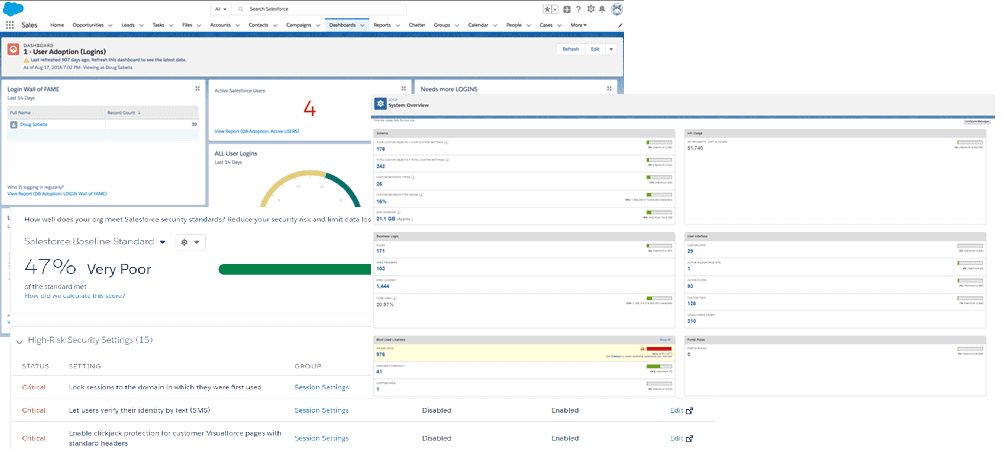3 Steps to Reduce Salesforce Technical Debt
You might be wondering why your Salesforce org is not performing as it should or has in the past. This can be attributed to the accumulated clutter in your org. In this article, we’ll give you an overview of why this occurs and how you can declutter it.
Technical debt is a phrase coined by wiki creator, Ward Cunningham, that refers to an approach where best practices haven’t been followed in the short run. This creates a context in which the same work will cost more in the long run instead of applying the best overall solution.
To begin, it’s best to understand what kind of state you’re currently working in. Symptoms such as complexity, confusion, slower performance, or project delays are typical of a cluttered Salesforce org. Some potential root causes for those symptoms are:
If you find your org is cluttered in technical debt, all hope isn’t lost. A three-step approach is recommended to declutter your organization.
Reduce Technical Debt Step 1.
Assess Your Org
Salesforce provides several forensic tools to find technical debt in your organization. Take advantage of these free tools such as System Overview, Schema Builder, Security Health Check, Salesforce Optimizer, etc. to complete a surface area review and get a preliminary understanding of risks and performance.

Visit Salesforce AppExchange to grab solutions like System Overview to help assess your Salesforce clutter of technical debt
BONUS! If you have not already done so, it is important that you take a step back and create a Data Dictionary that can help track why a field, object, workflow, etc. exists. Documenting the need for customizations like this will help you identify candidates for removal. For example, if a field is used less than 15% of the time, consider removing that field.
Take advantage of Smartbridge’s Health Assessment Service for a robust assessment of your customizations and data integrity.
Reduce Technical Debt Step 2.
Define Corrective Actions
Once the Salesforce org has been assessed and you determined the amount of technical debt you have, define your approach for optimizing your org. Depending on the number of fixes needed, take one of the following approaches:
| Ongoing Maintenance Approach | Project Approach |
|---|---|
|
|
Reduce Technical Debt Step 3.
Execute Your Plan
For an optimization project to be successful, it is important to get buy-in from your leadership (this includes formal leadership and informal opinion leaders.) Begin by creating a change roadmap and clearly communicate your vision. Keep the following best practices in mind as you execute the project:
If leveraging Lightning is one of your actions, take advantage of Salesforce’s Lightning Experience Change Management Hub that contains all of the recommended activities, tools, and resources for a successful transition.
A Clean House is a Happy House!
A cluttered Salesforce org not only hampers your team’s productivity but also reduces the overall efficiency of your system. By regularly auditing and streamlining your data, processes, and customizations, you ensure that your Salesforce environment remains agile and responsive to your business needs. Decluttering is not a one-time task; it’s an ongoing commitment that can deliver significant benefits in the long run, from improved user experience to enhanced data integrity and system performance.
At Smartbridge, we specialize in helping businesses optimize their Salesforce environments. Whether you need a deep dive into your current setup or ongoing support to maintain a clean and efficient org, our team is here to guide you every step of the way. Reach out to us today to discover how we can help you make the most out of your Salesforce investment.
Looking for more on Salesforce?
Explore more insights and expertise at smartbridge.com/salesforce
There’s more to explore at Smartbridge.com!
Sign up to be notified when we publish articles, news, videos and more!
Other ways to
follow us:




